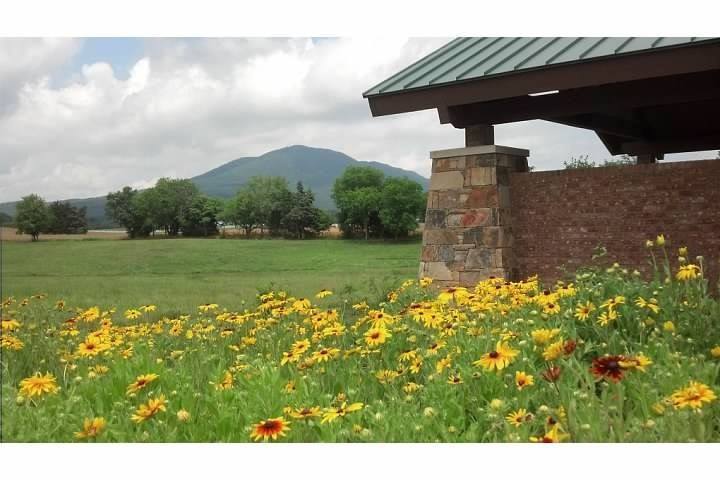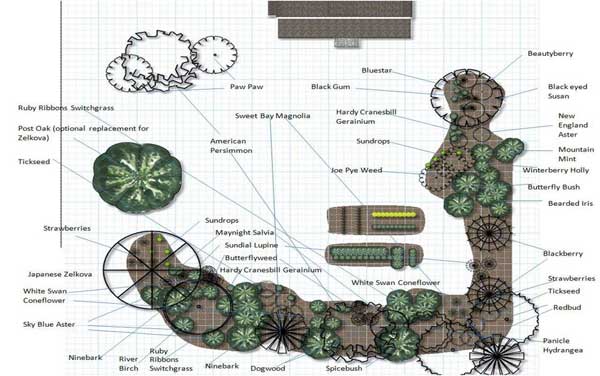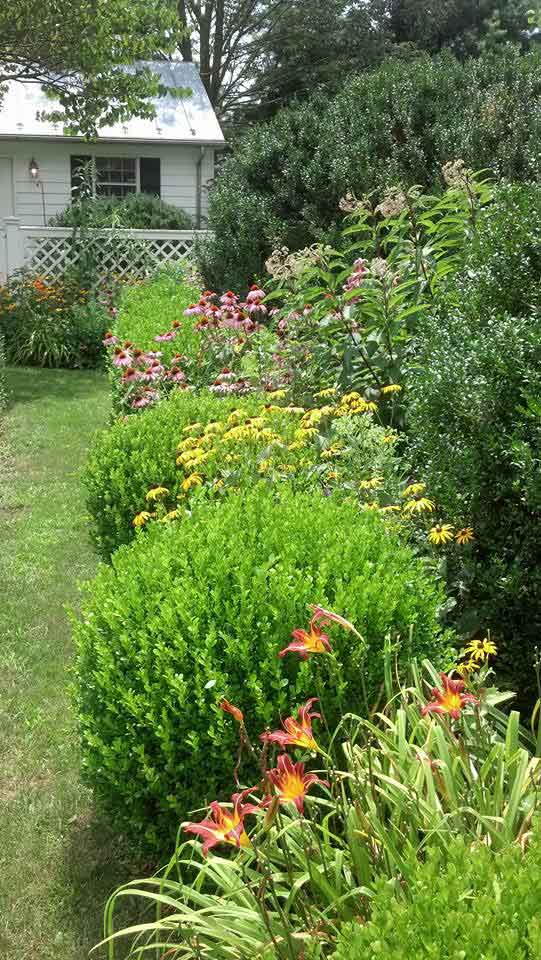In order to improve soil conditions, I focus on building deep rich soils by imitating nature and natural processes. I also suggest administering soil tests during the landscape planning process or before planting any vegetation.
Ways to improve soil based on four common landscape situations:
- Annual Vegetable, Herb, Flower or Market Gardens
- Encourage biological tillage.
- Bring your soil to life with compost.
- Maintain organic matter with mulch.
- Use crop rotation to mimic diversity.
- Create self-sustaining fertility with nitrogen fixing trees and dynamic accumulator plants.
- Till the mulch and top layers of the soil carefully with low-tech tools such as a broad fork.
- Rake or let chickens scratch the surface at the end of the season.
- Grasslands: Wildflower Meadows, Prairies, Pasture, Cropland
- Don’t disturb the soil – ensure the lowest level of mechanical disturbance possible.
- Always keep your soil covered with perennial cover crops.
- Planned disturbance in a form of animal impact and planned grazing.
- In the case of wildflower meadows and prairies controlled burns or annual mowings.
- Food Forests and Permaculture Orchards
- Improve your soil with green manures and transitional ground-covers.
- Inoculate your soil with mycorrhizal fungi.
- Use woody mulch to feed the fungi.
- Create self-sustaining fertility with nitrogen fixing trees and dynamic accumulator plants.
- Perennial Gardens, Shrubs and Trees
- Add manures for nitrogen.
- Use compost to improve soil conditions.
- Create self-sustaining fertility with nitrogen fixing trees and dynamic accumulator plants.
- Cover the soil with mulch.
- Till the mulch and top layers of the soil carefully with low-tech tools such as a broad fork, rake or let chickens scratch the surface at the end of the season.





 Jane Hannah Ruppe, 2021
Jane Hannah Ruppe, 2021